Really bad AVI of Jupiter – potentially interesting, but probably not
by Mike Hankey, under Mason Dixon Meteor, Planets
I was shooting Jupiter the night I took the meteor picture. I’ve been having problems shooting planets as I’m a new astronomer and still learning how to do it. I have taken a few DSLR shots but they don’t turn out right. I have a Celestron NexImage web cam and I was testing it out for the first time on Jupiter on July 5th, 2009. The picture is really bad and out of focus and there is only 3 seconds of video. I had taken a few minutes of video but like an idiot I kept saving over the same file name on subsequent clips, so I was only left with the last run which was about 3 seconds. With all the excitement from the meteor picture I totally forgot about even taking these videos. I remembered yesterday and checked the netbook computer I use with my scope. That’s when I saw I only had the one short clip.
The reason this is potentially interesting is because this AVI was taken before Anthony Wesley would have noticed the new black spot on Jupiter’s southern hemisphere.
The reason this is probably not interesting is because the quality is so bad you can’t really see anything.
There is a little black mark in the bottom right but i think it is just an optical effect/error from the camera. In the very last second of the video the planet moves a bit, I think this is from a nudge when I reached for the computer to turn off the clip (or something). In this same frame a dark spot in the bottom left appears. Again I think this is just some sort of distortion caused by the camera.
This Jupiter collision made me think a little bit though… Is it possible the Mason Dixon Meteor was some how related to the object that crashed into Jupiter? Could it be a fellow asteroid that just happened to hit Earth instead of Jupiter? Could it be remnants of a comet that strayed slightly to the left or the right of Earth and hit Jupiter instead of us?
I really think this picture is so bad it has no value, but on the off chance that some expert might be able to see something in it or use it as a reference point, I figured I would put it up here. If the Anthony Wesley discovery had not happened I would have thrown this AVI in the trash.
Here is a link to the raw AVI directly off the computer with no processing or anything.
I’m going to try to use Registax to see if it makes this look any better, but I doubt it will and I can’t find the disk right now. If there is anyone out there that can stack this AVI or improve the quality of the image please lmk.
Here are two screen caps I took off the AVI.
Please let me know what you think about the PA Fireball being related to the Jupiter collision. I know the picture sucks so send the hate mail to someone else.
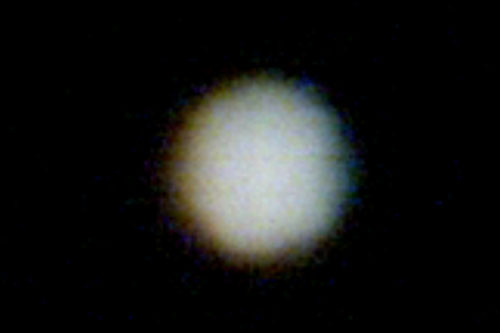
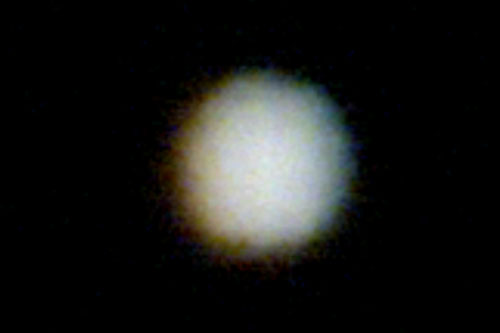
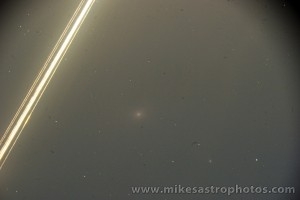
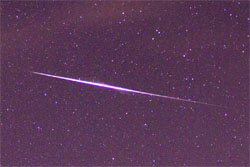
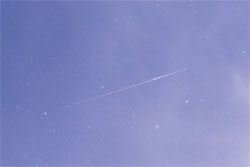
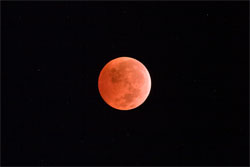


August 6th, 2009 on 1:45 am
A mysterious bright spot has also recently appeared on Venus. See this link…
http://www.scientificamerican.com/article.cfm?id=was-spot-on-venus-a-volcano-2009-07
Perhaps our entire solar system is passing through some kind of debris field. But if my attempts at meteor hunting provide a clue to what this debris field might be, I would say it’s the galactic slag belt.
August 6th, 2009 on 5:10 am
In brief the answer is no– the events are totally unrelated. The next answer is really really unlikely and unprovable if it were. As no flash was observed, the Jupiter strike was from an inbound orbit occurring on the dark side and the size of the impactor was probably 10s of orders of magnitude larger than the source of the PA Fireball. The transit time for a highly elliptic orbit twixt Jupiter and Earth are months to years depending on the velocity of the object.
Cometary debris streams are well documented and give rise to most of what we know as annual “meteor showers”. There are probably debris streams from mainbelt asteroidal material which earth enters on the same dates once or twice a year and thus a chance over several years of recovering petrologically identical material. Even when we have multiple fireballs spaced by but a few hours and meteorites were found, the meteorites have been totally different.
Occasionally we have seen a swarm of fireballs coming from the same area of the sky seconds apart suggesting a swarm of debris in loose orbit around each other but the physics and probability of any distantly spaced but closely timed events is in the deep deep deep practically impossible table of statistics.
August 6th, 2009 on 8:40 am
yes i’ve found pieces of that cosmic slag also. seems to be the most plentiful classification of meteorite